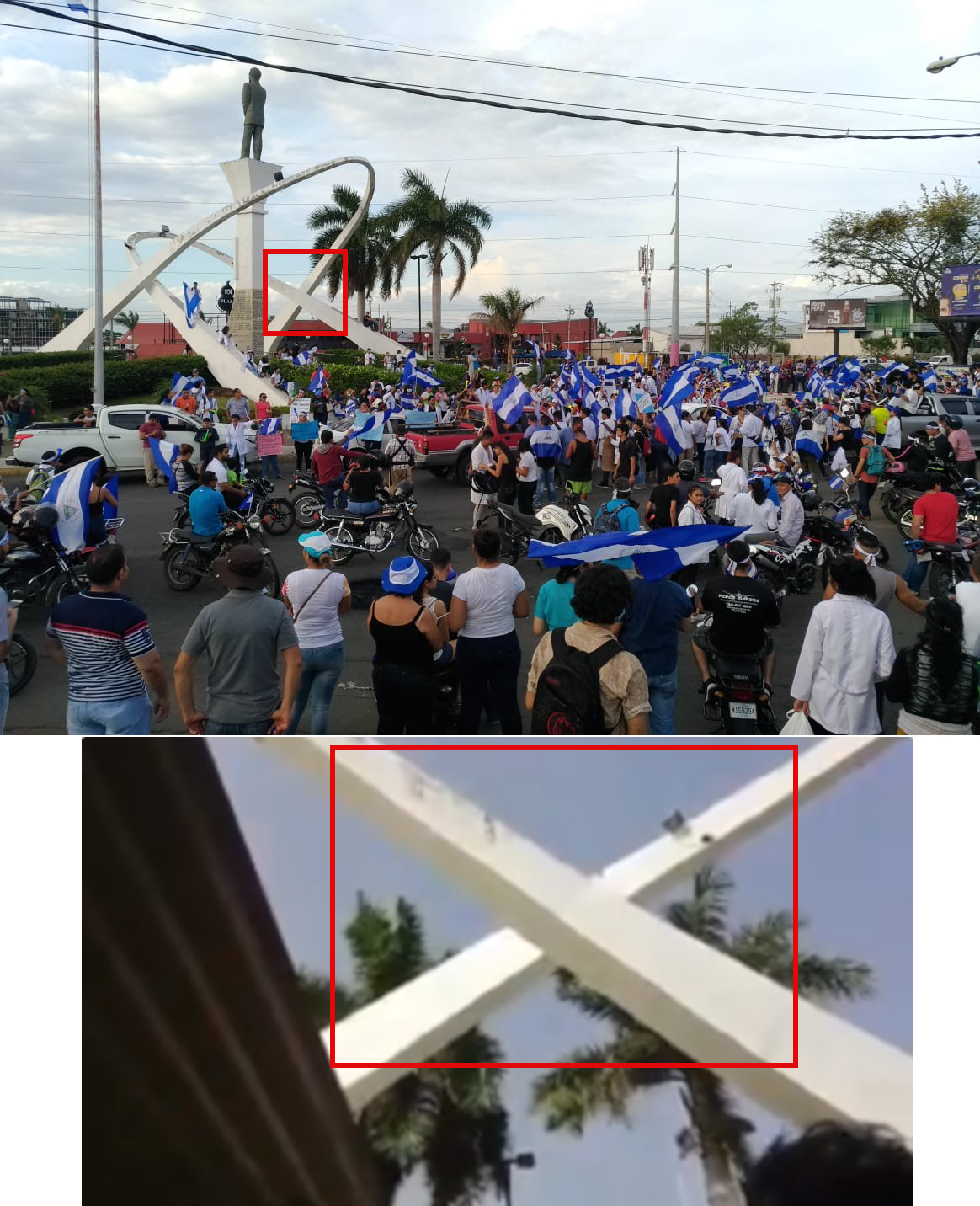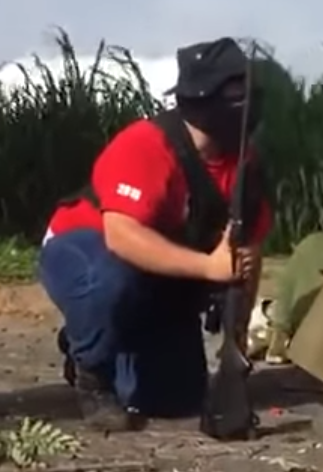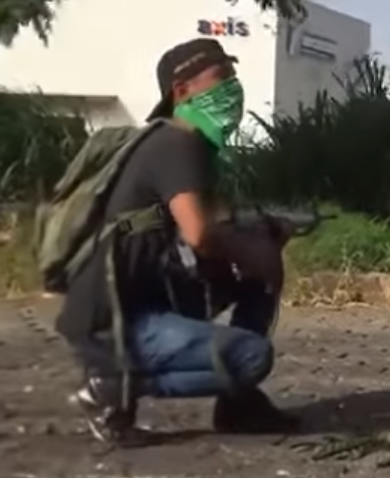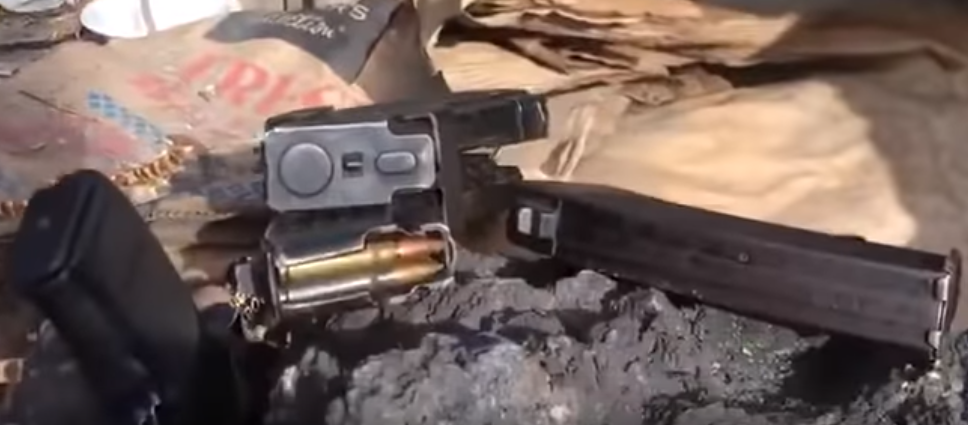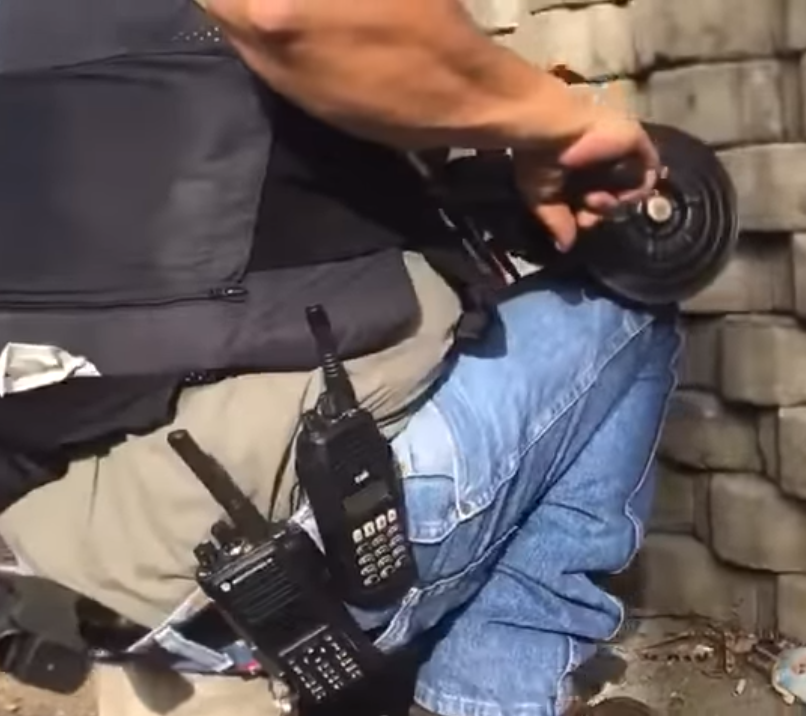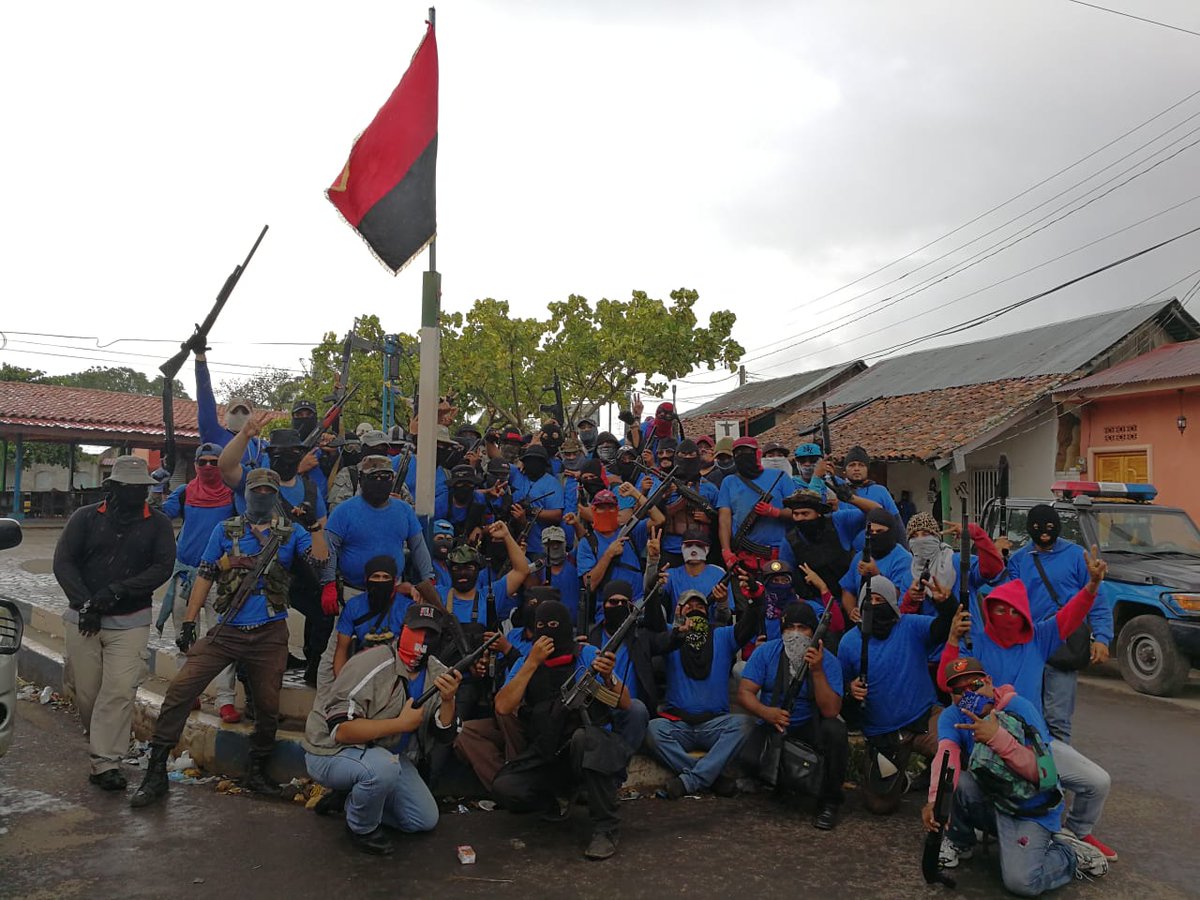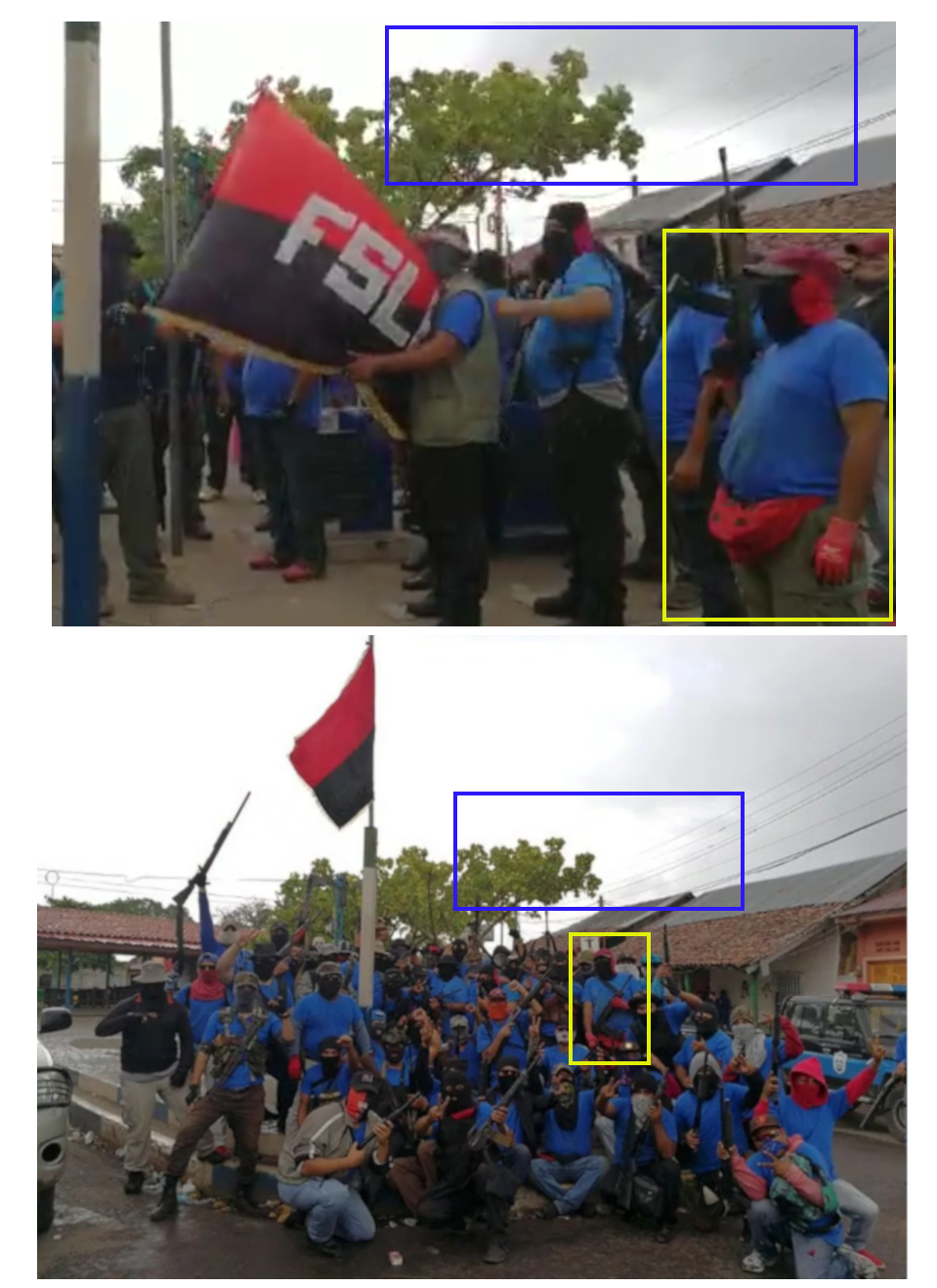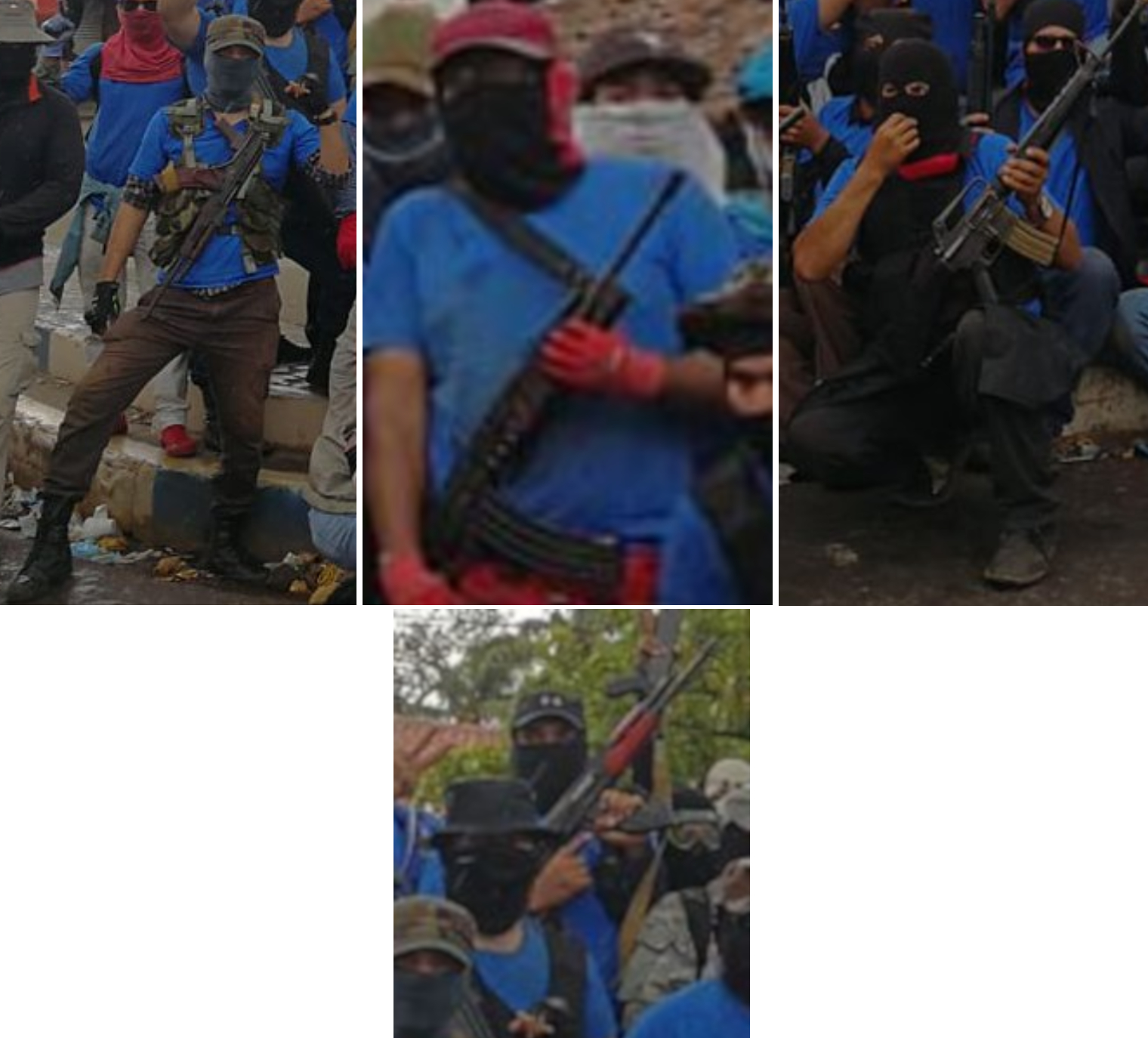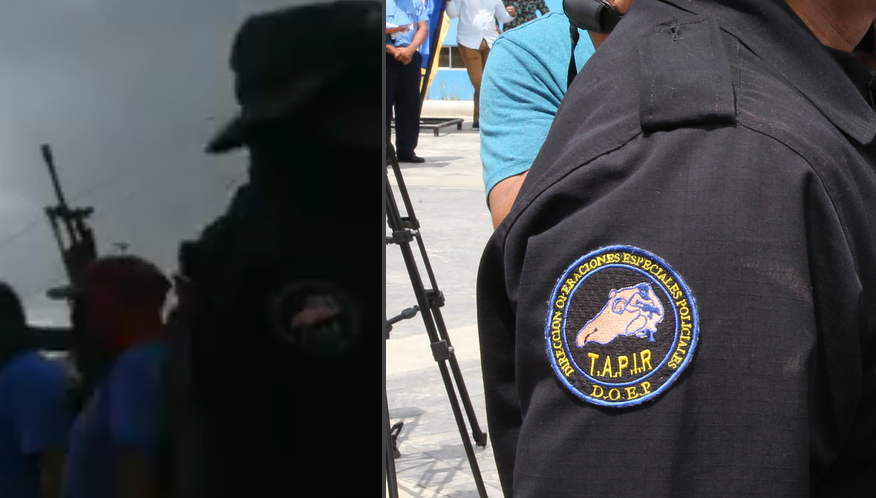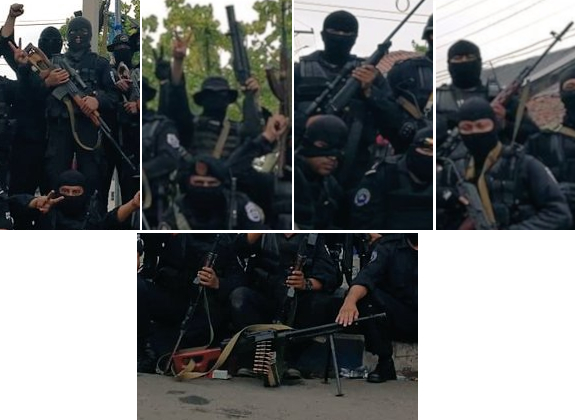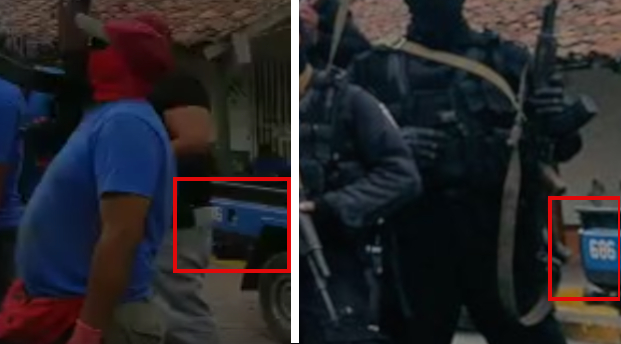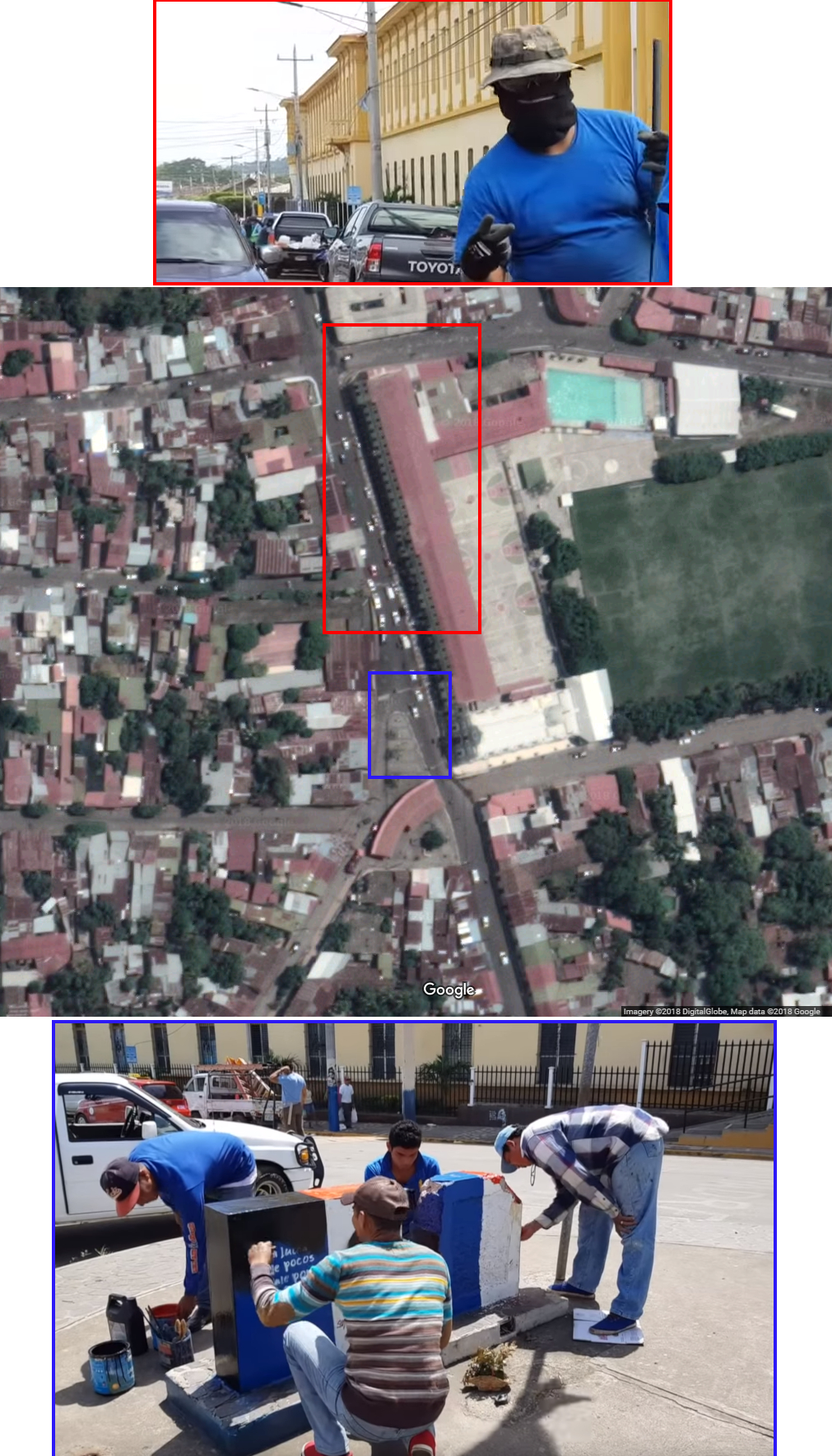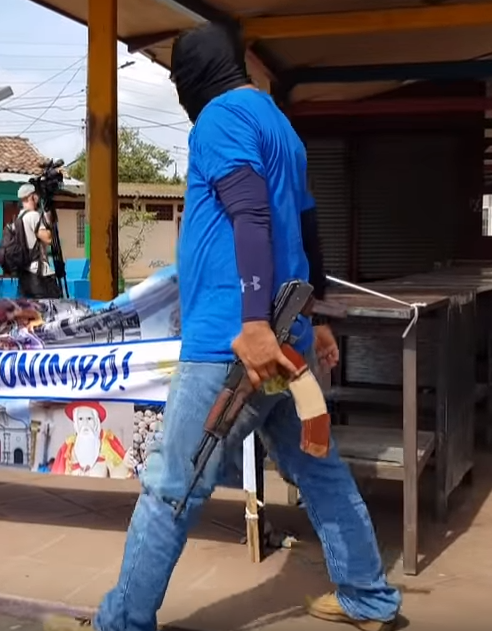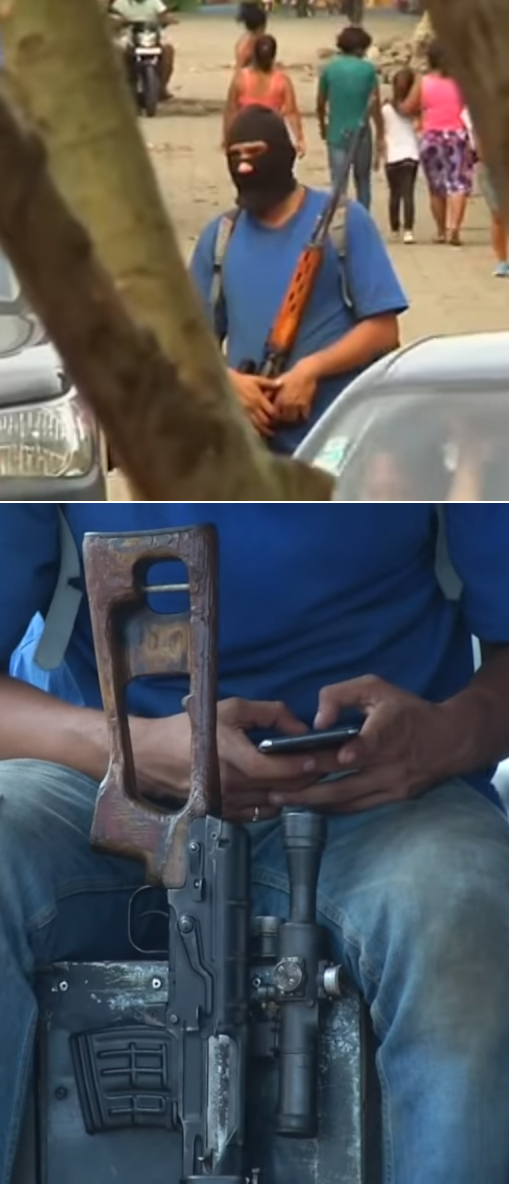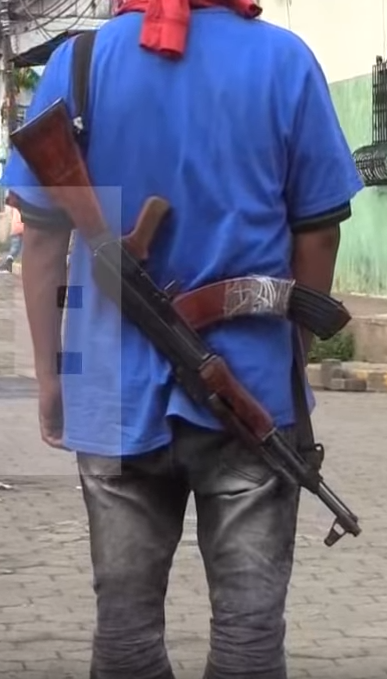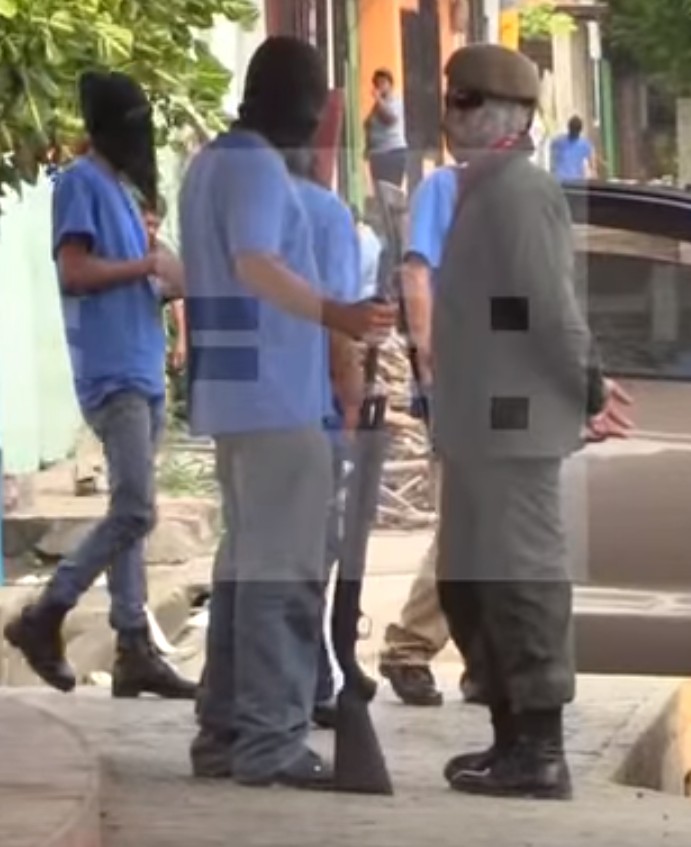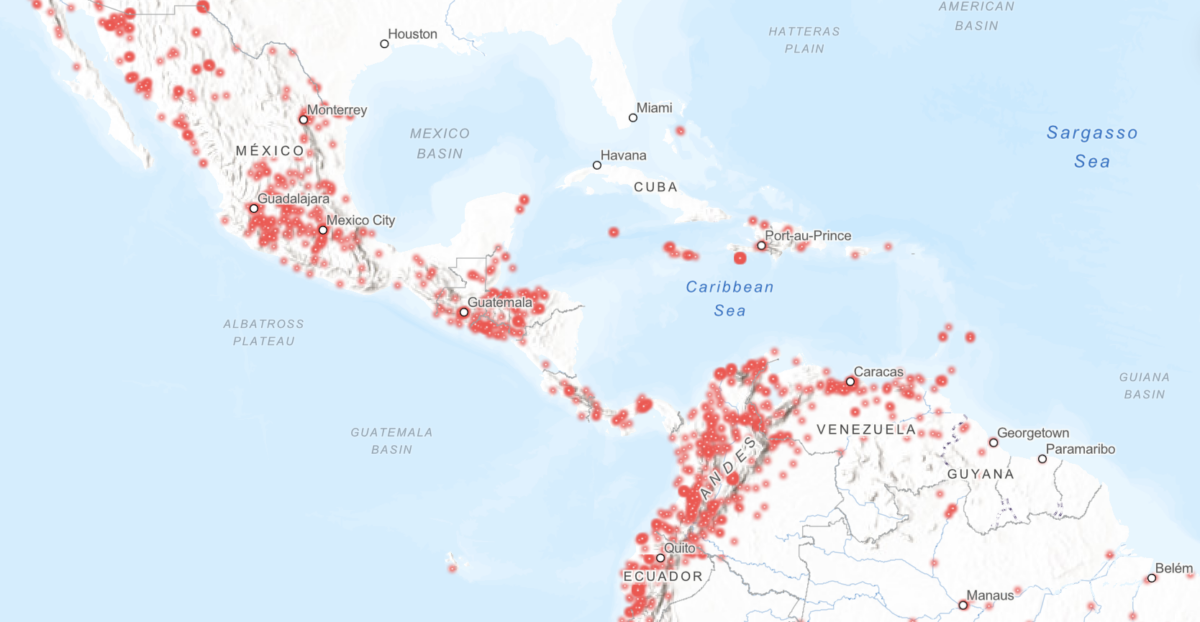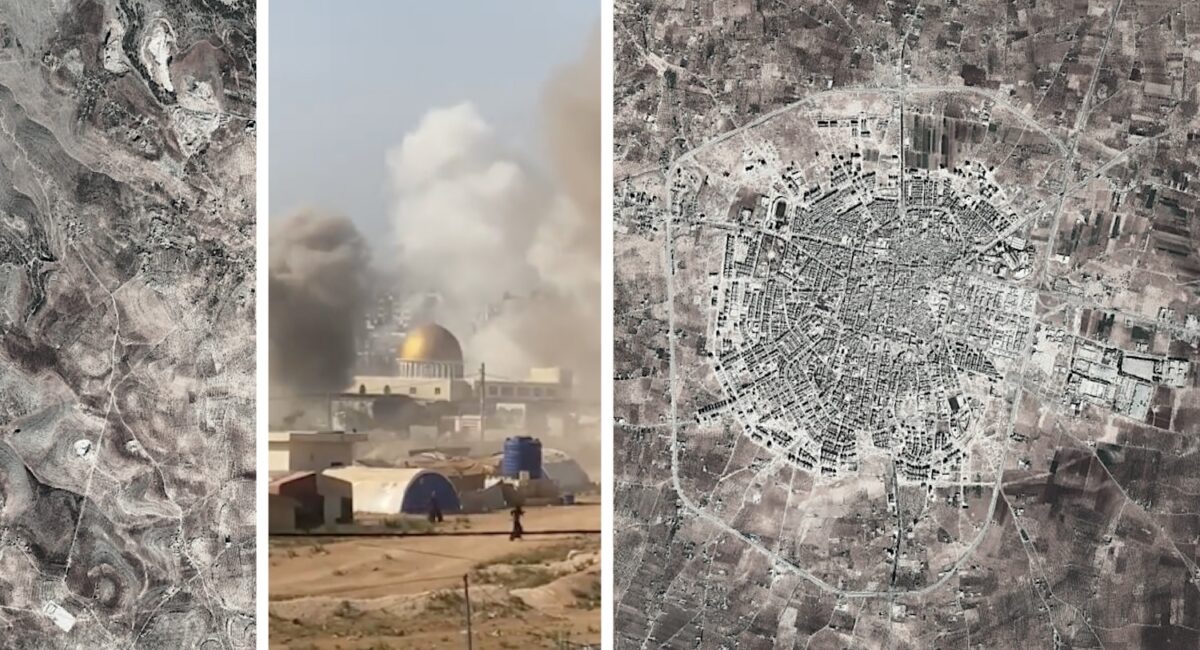Analysis of Nicaragua’s Paramilitary Arsenal
All times appear as local time UTC-6.
Human rights organizations and other non-governmental organizations (NGOs) have, in recent years, become aware of the importance of open source information for documenting and investigating potential war crimes and crimes against humanity. Even the International Criminal Court (ICC), in an August 2017 arrest warrant against Libyan general Mustafa Busayf Al-Werfalli, has recognized the role that freely-available information shared online can play in collecting evidence.
On December 21, 2018, the Grupo Interdisciplinario de Expertos Independientes (Interdisciplinary Group of Independent Experts, GIEI) published a report on the 2018 Nicaraguan protests, focusing on the period between April 18 and May 30. President Daniel Ortega crushed these protests—which were sparked by an unpopular decree reforming social security, but later grew to demand the president’s resignation—through the widespread use of deadly force. Estimates of the number of dead during the protests range from approximately 322 to 512. The GIEI report concluded that “the Nicaraguan State committed crimes against humanity” in its repression of the protests.
In its report, the GIEI identified the use of military weapons by police and paramilitary forces alike to attack protesters, including AK-74s, Dragunovs, PKM machine guns, and M16s. The report was complemented by open source information, including images of the protests shared on social media platforms.
Using open source information, this article identifies these weapons and others in the hands of paramilitary and police forces during two separate instances: the July 13 attack on the Universidad Nacional Autónoma de Nicaragua (National Autonomous University of Nicaragua, UNAN) and the July 17 takeover of Masaya. The article also highlights the close relationship between paramilitary groups and the Nicaraguan National Police during the 2018 protests.
The Paramilitaries
As the protests unfolded, the government of President Ortega relied increasingly on paramilitary groups to attack demonstrators. The GIEI report concluded that these groups acted “in parallel and coordinated fashion with the National Police,” and that this coordination included “guarantees of impunity” for these groups.
The paramilitary groups were made up of “unidentified persons” who often carried “military weapons.” The report indicates that members of these groups included public employees, members of the youth wing of the ruling Frente Sandinista de Liberación Nacional (Sandinista National Liberation Front, FSLN) party, the Juventud Sandinista (Sandinista Youth, JS), as well as current or former gang members. In a report titled “Instilling Terror”, Amnesty International also highlighted that the Nicaraguan government made “extensive use” of these groups to repress protests.
The Nicaraguan government’s position on the paramilitaries has fluctuated. President Ortega has suggested that they were financed and organized by drug traffickers and the United States government and denied all connection to these groups, later to say that the paramilitaires were “volunteer police”. Francisco Díaz, the head of the Nicaraguan National Police, said in an interview with Norwegian media published on February 2 2019 that “the majority” of the paramilitaries were in fact “professional police [officers]” conducting “secret operations”, while the rest were “volunteer police.”
Attack on the UNAN, July 13 2018
On July 13, 2018, government forces attacked student protesters at the UNAN, located in the south of the capital of Managua. The attack culminated with an assault on a church in which the students had taken refuge, leaving two of them dead. Some of the students recorded part of the attack, and said teary goodbyes to their loved ones expecting that their deaths were imminent.
The event was also recorded by one of the attackers. In the video, a group of armed men are taking cover behind a barricade. At the start of the video, they are preparing to advance to another barricade located in front of their position.
The paramilitary assault on the UNAN in Managua on July 13, 2018:
https://www.youtube.com/watch?v=4ds9H5zYK70
Visual clues in the video allow for its geolocation to a 100 meter stretch of road north of the Rigoberto Lopez Pérez roundabout, which serves as one of the entrances to the UNAN:
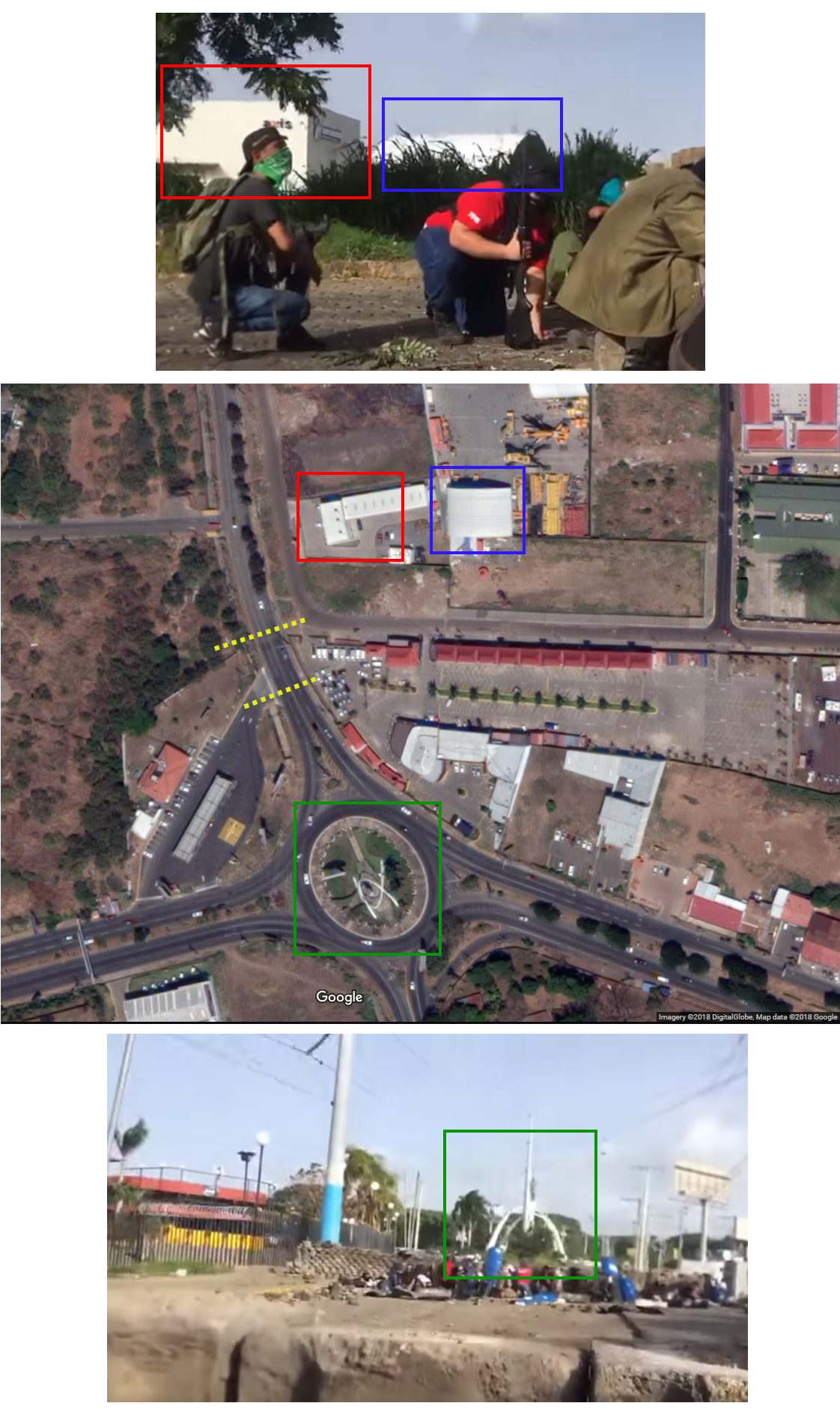
The approximate location of the two paramilitary positions are marked by the dotted yellow lines. The paramilitares were advancing towards a student barricade located beneath the monument marked by the green box (satellite image courtesy of Google/Digital Globe)
The earliest version of the video found was uploaded to YouTube at 8:02 PM on July 13. Based on the direction and length of the shadows cast by the paramilitaries as they advance, it is possible to approximate the time that the video was recorded to a window between, roughly, 3:45 PM and 4:15 PM that day.
The paramilitaries in the video were advancing toward a student barricade which was located underneath the monument on the Rigoberto Lopez Pérez roundabout. One of the students in that barricade appears to have recorded part of the attack:
AHORA. Así suenan las ráfagas contra los estudiantes en barricadas de Universidad #UNAN durante ataque masivo de paramilitares del Gobierno Ortega #SOSNicaragua pic.twitter.com/9WmiRHjHuO
— Javier Bauluz (@javierbauluz) July 13, 2018
(source)
The earliest version of the student video found was uploaded to Twitter at 3:31 PM on July 13. Given the estimated time window of the paramilitary assault video, it is possible that the students recorded part of that same attack.
The following still frames were taken from the paramilitary assault video:
Remington 700/M24SWS rifle. Remington 700 is the civilian name for the weapon, while the military version is called M24SWS:
M16A1 assault rifle. Note the distinctive carry handle that sits atop the rifle:
AK rifle ammunition magazines and an unknown handgun, likely a Bersa Thunder 9 (thank you for the tip, Twitter user @revoabril1904 !)
Soviet Pattern 75 round drum, possibly Russian or Romanian:
The image above also shows a pair of two-way radios. The one on the left is probably manufactured by MOTOTRBO (see DP4800 and XPR 7000 series) while the one on the right is probably a Tait TP8100 series. These radios are marketed for industrial and commercial use, and evidence suggests that the Tácticas y Armas Policiales de Intervención y Rescate (Intervention and Rescue Police Weapons and Tactics, TAPIR) unit of the Nicaraguan National Police used similar radios in the past, as seen in these videos.
Amnesty International believes that Nicaraguan “authorities at the highest levels… directed and controlled certain aspects” of this paramilitary attack.
The Takeover of Masaya, July 17-18
Masaya is a city located approximately 20 kilometers south of Managua, Nicaragua’s capital, and was the site of frequent confrontations between the government and demonstrators during the protests. Government forces took control of the city from the protesters on July 17. These forces included a contingent of paramilitaries who recorded themselves raising an FSLN flag in a plaza to mark their victory. The earliest version of the video found was posted on the Facebook page of El 19 Digital, a pro-government page, at 1:45 PM on July 17:
Monimbó, territorio liberado
Geplaatst door El 19 Digital op Dinsdag 17 juli 2018
An image shared in an article by El 19 Digital shows the paramilitaries posing for a picture in the same location. Most of the men are dressed in blue shirts, a characteristic that distinguishes them as members of a paramilitary group according to the GIEI report.
A paramilitary group celebrating the takeover of Masaya on July 17 2018 (source):
Comparison between the video (top) and the image (bottom). Note the man with the red hat, red gloves and black mask is present in both the video and the image, and that the same section of the sky is cloudy, suggesting that the picture and the video were taken within a relatively short period of time (source):
Some of the weapons wielded by the paramilitaries, starting from the top, left-to-right: MPi-KMS-72, Galil ARM, M16A1, underfold AK (possibly an AKMS or Type 56-1):
The video also highlights the close connection between Nicaraguan police and the paramilitaries. At the 1:40 mark in the video, a man in black uniform appears. The word “POLICIA” (Police) is written in white on the back of the man’s uniform. At the 1:50 mark, the man turns and walks out of frame. As he does, a patch on his right arm briefly becomes visible. The patch appears to be that of the National Police’s TAPIR unit.
The patch on the man in police uniform in the video (left) appears to be that of the TAPIR unit of the National Police, as seen in the image on the right (source):
There is another piece of evidence that suggests a close relationship between police and paramilitaries: an image apparently taken at about the same time showing police officers on the same spot. The image appeared on El 19 Digital, the same pro-government page that shared the paramility flag-raising video, on July 17. The image was also shared on Twitter, as seen in the tweet below calling attention to the weapons carried by the officers:
Los policías celebran la masacre en Monimbó, Masaya. En la foto se observa al menos una PKM, Dragunov, M24 y lo que parece, una escopeta lanzagranada M79. pic.twitter.com/Tk3ZHhlbQV
— Maynor Salazar (@Maynorsalaz) July 17, 2018
Some of the weapons wielded by the police starting from the top, left-to-right: PSL, M79 grenade launcher, Remington 700, Dragunov SVD,, PK-pattern light machine gun (source):
The ground appears drier in the police image than in the paramilitary one, suggesting that the two were taken some time apart. However, it is possible that the same police car appears on the right of both images, suggesting that they were still taken within a relatively short period of time.
The police vehicle in the flag raising video (left) and the police group image (right). Note the last digit of the registration number of the vehicle (appears to be “6”) and that it is parked in the same spot in both images, which suggests that it might be the same vehicle (source):
On July 18, journalists with Agence France-Presse (AFP) and Agencia EFE (EFE) recorded footage of paramilitaries at the same plaza as the one above. Based on these videos, we can geolocate the footage to the Pedro Joaquin Chamorro plaza, which ordinarily serves as a community market.
Geolocation using stills from the AFP footage (satellite imagery courtesy of Google/Digital Globe):
The videos include high-quality shots of some of the weapons that the paramilitaries carried, which are identified below.
Jungle-taped AKM with no stock:
The man in the images above appears in the AFP and the EFE videos. He is carrying an SVD Dragunov with a PSO-1 scope. Note the colour of his shirt and the grey backpack straps, which suggest that it is the same man in both videos:
Jungle-taped Type II AK:
A common weapon carried by the paramilitaries was the Mossberg 500-pattern shotgun, like the ones seen in the images below shared by the Nicaraguan news website Confidencial showing paramilitaries in Masaya on the morning of July 17:
#Monimbó | El ataque de paramilitares y policías contra el barrio indígena de Monimbó, no ha cesado desde horas de la madrugada. https://t.co/kjTx7WonkO pic.twitter.com/tBbTzsmzDM
— Confidencial.com.ni (@confidencial_ni) July 17, 2018
A Mossberg 500 pattern shotgun. This one appears in the EFE video:
War Weapons, War Wounds
According to the GIEI report, there is evidence dating back to 2011 of FSLN members “giving weapons” to civilians “to use in aggressive acts against political opposition groups.” In its analysis of a government operation in the town of Diriamba on July 9 2018, Amnesty International concluded that “most of the weapons” used by paramilitary and police forces there were “service weapons exclusively issued in the Army.” The use of the weapons highlighted in this article by paramilitary groups fits into the pattern of close collaboration between these groups and official state security forces as observed by both Amnesty International and the GIEI investigators.
On May 26, 2018,Confidencial published an investigation titled “¡Disparaban con precisión: a matar!” [“They shot with precision: to kill!”]. After tracking down the medical imaging records of 19 protesters in a Managua hospital and speaking to doctors there, Confidencial found that 15 of them had been shot in the head, and at least eight of them had been killed.
A doctor at the hospital spoke to the publication on condition of anonymity about what the medical imaging showed. The doctor said:
“Based on what I’m seeing, they were shooting with ‘scientific precision’: to kill!”
The Confidencial investigation offers yet more evidence that the Ortega government was determined to bring an end to the protests by any means necessary. The indiscriminate use of the weapons seen in the hands of paramilitary and police forces alike in this article made the kinds of injuries reported by Confidencial not only possible, but practically inevitable.
Far from being reserved only for human rights activists and NGO investigate panels, the identification and documentation of the use of these kinds of weapons is within the purview of open source investigators around the world.
The weapon identifications in this article were done with the help of @CalibreObscura, an independent open source researcher who specializes in weapon analysis from conflict zones around the world.
